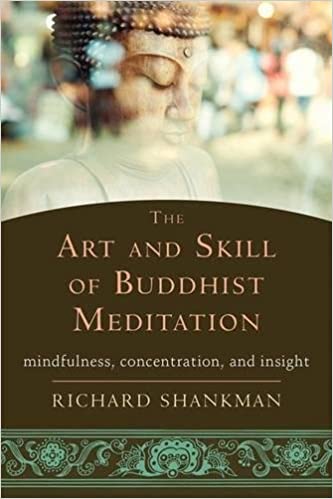Richard Shankman – The Art and Skill of Buddhist Meditation Audiobook
Richard Shankman – The Art and Skill of Buddhist Meditation Audiobook ( Mindfulness, Concentration, and Insight)

Richard Shankman -The Art and Skill of Buddhist Meditation Audiobook
.
Richard Shankman’s Art and Skill of Buddhist Meditation is a piece of an increasing pattern in Buddhist reflection in the West that shows a collaborated method of reflection rehearse, one that unifies care, extensive thoughtful stillness (samadhi, now and once again analyzed as “focus”), and releasing understanding. In numerous practice conventions in both East and West, these 3 streams have actually ended up being separated into schools or customizeds, each of them often separated from the others. The Art and Skill of Buddhist Meditation Free Online. In this volume of affordable instructions, Shankman dominates at reintegrating the Buddha’s method of training in a manner that can benefit meditators at all stages of enhancement.
The book is made up in a basic and captivating design that captures Shankman’s talked voice and hands down his unusual method to handle one- on- one and event training of meditators. Shankman discovers himself here to be a fragile and conscious guide, one exceptionally conscious the tremendous variety of specific participation in reflection. He offers discovered assistance to different approaches for contemplating, with a dependable accentuation on discovering the bundled practice that works for you and on doing “along with can be anticipated” in all conditions. Richard Shankman – The Art and Skill of Buddhist Meditation Audiobook Download.
All through the book, Shankman takes the view from inside the believing mind– a strange point of view in a field of books that tend to focus on concepts and representations all things thought about. Shankman’s perspective makes his book considerable for comprehending the complete cluster of encounters that can emerge in reflection, how to understand them, and how to work beneficially when they emerge. Shankman is similarly one of the not many developers conquered enough to truly discuss what samadhi (and the associated jhana states) truly feel and look like; in doing as such, he debunks and standardizes encounters that have actually really often been constructed to be unusual, rarified, and deceptive. Doing as such is essential on the premises that, as Shankman appears, the collected and still character, a particular limitation of mind that we as an entire deal, is an abundant field for extensive understanding.
The book is refreshingly free of language and expertly prevents the partisanship and bitterness that have now and once again represented talks of the various streams of training that are masterfully blended here. Shankman does not examine the fascinating history of how the bundled method of training set out in the Pali group, the most prompt record of the Buddhist lessons, ended up visibly segmented into independent practices in 19th century Burma and the twentieth century West. In any case, that history is presently quite protected elsewhere: Shankman keeps the focus on the down to earth concerns that withstand meditators in day by day practice.
I really recommend this book to all meditators, nevertheless specifically to the people who get themselves bewildered by the altered, now and then clashing, instructions or instructions that they have actually obtained from trainers about the significance of focusing on care to the rejection of samadhi, samadhi to the restriction of care, or comprehending to the avoidance of both. This book can really allow you to avoid all that meaningless “brush of viewpoints” and establish your reflection focus a collaborated manner in which matches your personality and the compounds of your every day life.